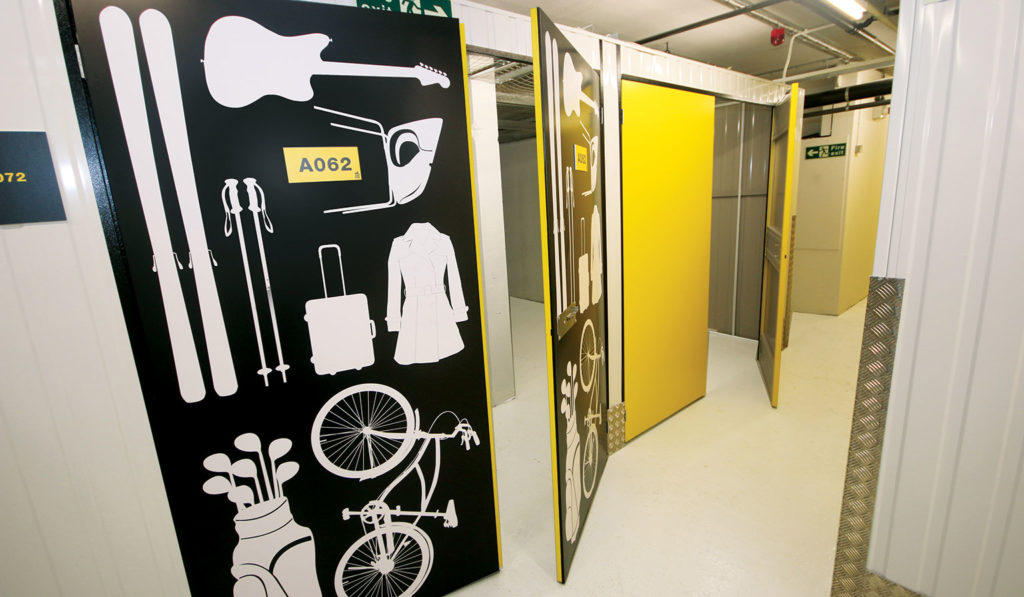Is self-storage a market with untapped potential in London? Neil Tague finds out
Key points
- Metro storage on rise with urbanisation and smaller homes
- New operators in the market looking at London
- Asian model of urban storage includes a concierge style
Self-storage – nothing really changes there, does it? Crinkly 40,000 sq ft sheds or converted factories, bright signage, an A-road location on the edge of town. We all know the script.
But actually, the market is changing. According to Ollie Saunders, lead director in JLL’s alternatives team, increasing urbanisation and the growth of technology are leading to significant shifts in how the market is operating. Welcome to the world of metro storage.
Saunders says: “What we will see happening is a greater number of smaller, metropolitan self-storage units in areas where rents are higher, than larger units elsewhere. Automation and staff being more local are factors bringing fixed staffing costs down.” For those without cars, convenience is a key factor, too.
Heading the charge is Urban Locker, now operating its first site close to the Old Street roundabout. Founder Alex Wingate says: “We thought there was a gap in the market the larger operators were not looking to fill. You cannot compete for large sites in city centres, because you are up against high-end residential, so you have got to seek out creative opportunities, such as old car parks. Apartments are getting smaller and people need more external storage. We are looking for more sites.”
Also busy is the Self Storage Company, part of James Taylor Group. Much of this group’s construction work was delivering standard storage units for others, until the recession hit. Chief executive Emil Sohrab says: “They stopped expanding overnight. But we still had a lot of expertise, so started delivering storage ourselves.”
The business has three operational sites outside London, but is onsite with two in central London. “Our model is 10,000 sq ft in London, and 50,000 sq ft to 60,000 sq ft outside,” Sohrab says.
JLL is working for clients seeking opportunities in zones 1, 2, and 3. There is inspiration from Asia at play here. Saunders says: “Self-storage is becoming a key part of community hubs in Asia. In places like Hong Kong there is a valet service, bringing your stuff to your door from the metro storage unit close by. It is a customer-friendly model.”
The established players are innovating, too. Access Self Storage has a facility under a new residential block in Croydon. In Maidenhead, Lok’n’Store is cheek by jowl with a Lidl store. Others have teamed up with student apartment developers.

The preparedness of operators new and old to be more flexible is a definite trend. In Sidcup, Chancerygate has a deal in place with an operator to take the listed (but long problematic) Klinger Building, at the heart of a seven-acre site it bought in April. US-owned Shurgard will look at any London opportunity, agents say.
Rapleys partner Colin Steele says: “The ‘premier league’ players are still there, but there are newer names too, some in the market for different stock. The urban sites are weighted to that small business offer, and I think it has blurred the lines with document storage.”
Lok’n’Store operates a distinct document storage brand, Saracen, and isn’t being distracted from its course, according to acquisitions director Colin Jacobs. He says: “We are continuing to acquire sites, but what we generally do is work in decent county towns. It gets very competitive inside the M25.” In August, it bought sites in Hemel Hempstead, Hertfordshire, and Broadstairs in Kent.
Steele says: “You need to work at it, but those quirkier locations – basements, former car parks – can work. We have looked at unusual opportunities, old underground bunkers, for example. The big issues you have there are access and servicing, because they were not built with storage in mind. I definitely sense more willingness to look at those types of opportunities now.”
Bonnie Minshull, director of industrial and logistics at Savills, says: “Over the past six months, a lot of operators have resurfaced and been on the phone to us looking for sites. They are more flexible now than they were – at one time they were only after those sites with prominent frontage in the sweet spot of 30,000 sq ft to 50,000 sq ft.”
A key difference is ownership: the preferred model with most larger sites is ownership (although the likes of Big Yellow and Safestore will take leaseholds where necessary). That is not the case with the metro market, pricing being the obvious inhibitor.
Landlords are generally happy to let space to self-storage, says Oliver Close, valuation and advisory partner at Cushman & Wakefield. “The larger operators are strong covenants,” he says. “They are large public companies, or US-owned multinationals. The smaller operators might not be as financially strong, but for property owners with unusual or smaller space, they may be the best option.”
So who else is in the game? Vanguard operates under the W1 Storage brand in Marylebone’s Q-Park. There is Metro Storage, which currently has two locations, one close to Paddington, W2, and at Islington, N1. Space Station currently has eight locations, six of them in and around the western fringes of London.
The game is not changing completely, says Steele: “There is an element of branding, but it is the prominence of the site that ultimately makes a storage location work. Self-storage, like any employment or industrial use, is constantly challenged by the strength of residential – it is hard to see self-storage competing in the top quartile. That said, with residential taking a slight downturn, who knows?”
The trendier suburbs will prove more resistant to storage, reckons Steele, although he adds that design is becoming more sophisticated than the standard, eye-catching branding. Still, height and size can be inhibiting factors, however the branding is softened.
According to the Self Storage Association of the UK, the country has more than 1,000 locations and although the big players (those with 10 or more sites) have more than 50% of the market by volume, they only have 35% of the sites. So there are, as there always have been, opportunities for nimble opportunists.
Saunders for one believes the market will become increasingly dynamic. “I am always surprised there are not more entrepreneurs creating self-storage assets in the UK,” he says. “There are probably 10 companies on quite aggressive growth trajectories right now, whether through acquisition or new sites. Banks are keen to lend in this sector, and private equity backers are on the phone looking to back operators.”
The race to get smaller
So is the race on, with entrepreneurial investors looking to tap into this lucrative market? Yes and no.
Urban Locker’s Alex Wingate – a residential developer turned investor – says: “It is a different market to standard storage. There are other people doing it but we are definitely one of the leaders. Five years ago, I thought I would be pushing at an open door. Delivering is easier said than done, however.”
Spotting old car parks or ferreting out basements with potential is less than half the battle. There is much remedial action required – car parks leak, for one thing. They have got to be secure and safe, and made fireproof. Access has to be good. You need planning. If you’re looking at a basement, it is probably part of a £100m commercial asset. Even if the owner wants to grant a long lease, it will affect values, and negotiations can be tortuous.
As Wingate says: “Demand is strong. Supply is definitely the limiting factor in this market.”











